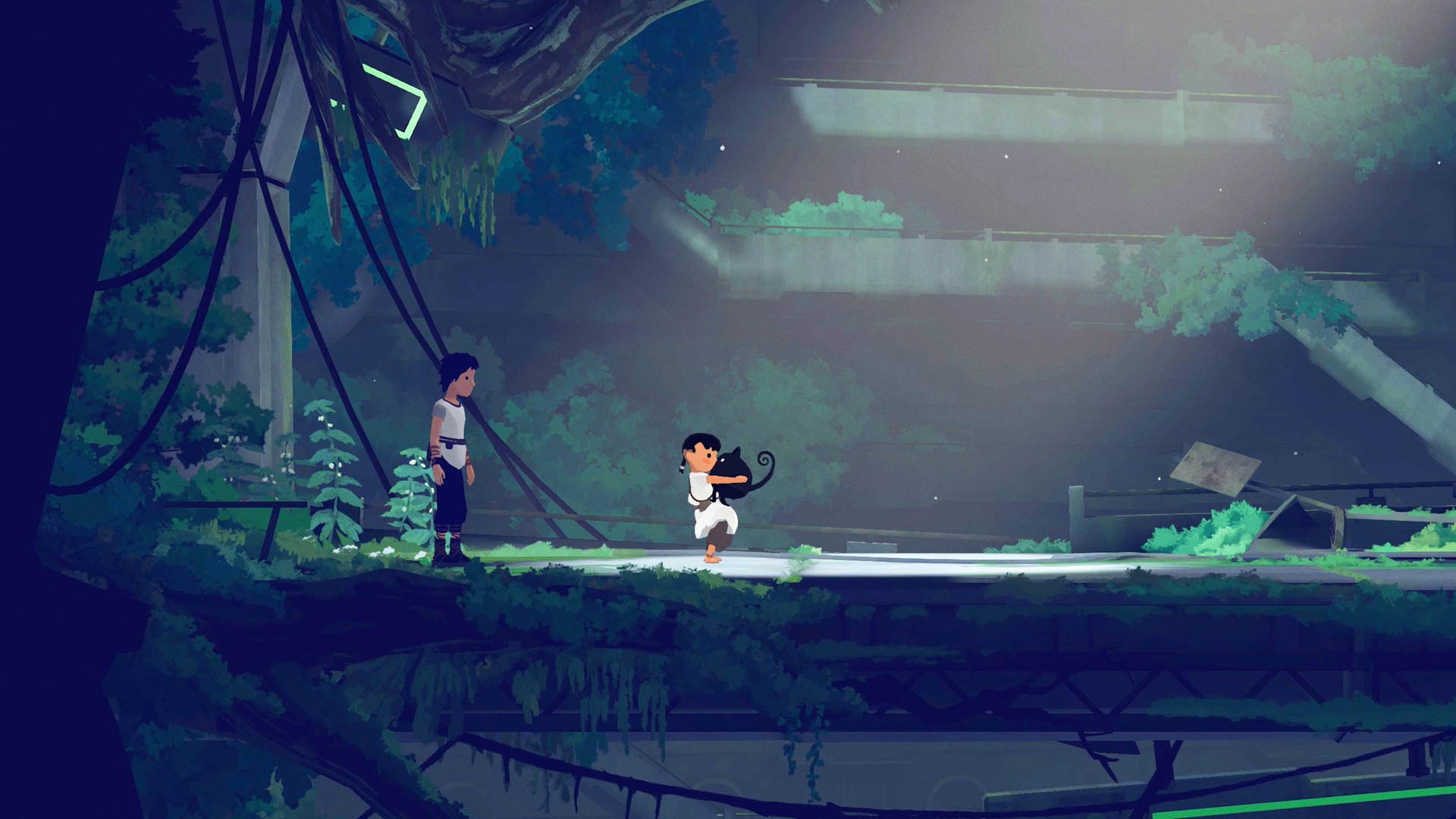I walked out of my Planet of Lana II: Children of the Leaf demo at Gamescom with that rare mix of comfort and surprise. Comfort, because this world still wraps itself around you like a warm blanket, all pastel skies and hand-painted silhouettes that whisper Studio Ghibli without ever imitating it. Surprise, because this isn’t just more of the same. It’s sharper, denser, and braver, like a storybook that suddenly grew teeth.
The session dropped me into four very different slices of the game, and each one pushed the bond between Lana and her companion Mui into new territory. The opening level felt like a nod to the original: Lana sneaking through a small settlement while hostile machines clanked their patrols nearby. But Mui is no longer just a cute sidekick hopping on ledges. He can short-circuit and sabotage machines, knocking them offline long enough for me to slip past. That simple tweak completely changes the rhythm. Instead of only distracting enemies, Mui now dismantles them quietly, surgically. It’s still stealth, but with an added pulse of satisfaction when you hear the hum of a dead machine fade into silence.
The demo then pulled me underwater. Lana dive and swim freely, the light cutting through turquoise water while alien plants swayed in the currents. Mui used its powers to control a small fish, darting into tunnels too tight for Lana and solving puzzles on his own. Directing him felt like extending your own body into new shapes, and the puzzles played with that trust: blocking view from enemies with ink and sneaking around dangerous creatures. It was serene, but also tense, the kind of level that forces you to breathe slower, not just for Lana but for yourself.
From there, the tone snapped into something darker: a prison escape. Cold stone walls, echoing footsteps, and giant magnetic blocks that had to be dragged, pushed, and rotated with precision. Every switch triggered some mechanical groan, each puzzle layering tension with the threat of discovery. It was clever without being cruel, but the complexity was leagues above the first game. This is the moment I realized the sequel isn’t holding our hand anymore. It trusts players to experiment, to fail, and to feel the weight of every solution.
The final stage of my demo bloomed into a jungle, drenched in emerald greens and pulsing with strange wildlife. Here I could control a creature that could absorb water and spit it back onto budding plants, making them sprout into natural ladders. It felt whimsical at first, but then the puzzles escalated, weaving biology and logic together in ways that made me stop and smile every time the world reshaped itself. Lana and Mui weren’t just adventurers anymore; they were caretakers of a living ecosystem, bending it to survive while respecting its rhythm.
What ties all these levels together is how much more demanding the game has become. The puzzles are deeper, the enemies less forgiving, and the margin for error slimmer. It never feels unfair, though. It feels like the developers trust us, trust us to think, to adapt, and to keep pace with Lana’s growth. Where the first game often played like a dreamy stroll through a painting, Children of the Leaf sharpens that dream into something more tactile, more urgent.
And through it all, the bond between Lana and Mui anchors the experience. The silent communication, the tiny gestures, the way their abilities interlock, it’s all stronger, more intimate. Mui isn’t just there to follow anymore; he’s there to fight alongside you, to transform, to carry part of the weight. That partnership makes every solved puzzle and every narrow escape feel earned.
By the time my hour ended, I wasn’t ready to leave. I wanted to dive back into that ocean, to push one more magnetic block, to see how far the jungle would stretch. Planet of Lana II is maturing its world and I’m here for it.


